The last few weeks in lock-down mode have been filled with troubling news, inconvenience, or much worse.
Our hearts go out to those families affected by the loss of loved ones, or the distress of sudden hardship. Our hearts go out to those who work on the front lines in this pandemic – the people who care for us, feed us, and keep our society running.
In spite of everything, we feel there’s a lot to be grateful for. We cyclists have the additional gift of a favorite activity that lets us enjoy newly empty roads as we restore our balance.
Even so, we are dealing with extraordinary times with a lot of uncertainty. It’s a time for extra TLC, for those around you and especially for yourself. Here are some resources and tips we have gathered as we have worked on getting ourselves and our families through the Coronavirus crisis in good health.
Practical ways to take care of yourself
It’s important to maintain physical and mental health to help cope with stressful circumstances. Cycling certainly helps with that, along with other physical activities that get the heart racing and endorphins flowing. In fact, an innovative program was started recently in the UK, where doctors are actually prescribing cycling as a cost-effective, medication free treatment for some patients.
That said, it’s possible for too much of a good thing to take a toll. If you are cycling a lot more all of a sudden, outdoors or stationary, it’s a good time to pay more attention to rest and recovery.
Foam rolling – your new favorite post-ride activity.
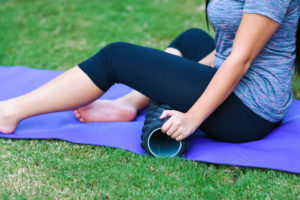 Foam rolling is a key technique for physical therapists, and the secret behind the performance edge of many athletes who push their limits.
Foam rolling is a key technique for physical therapists, and the secret behind the performance edge of many athletes who push their limits.
For the rest of us, foam rolling can loosen up the muscles and tissues that tense and tighten after strenuous workouts. Breaking up tight spots and clearing lactic acid from sore muscles can fix those creaky limbs and get you ready for the next ride much sooner.
Foam rollers are available in different grades of hardness, from soft to seriously ouch. The color indicates the grade – white is a good starting place. Try a cheap one to begin with, and upgrade if you find your technique or sore spots demand it.
This article on prevention.com gives a nice overview and some basic foam rolling exercises to start with.
Wearing a face mask while cycling
Here in Vermont we are now required to wear face coverings whenever we are in public places. This follows CDC recommendations, and some other areas are setting it as a mandate too. That raises questions for those who are outside getting some strenuous exercise. Should I wear a mask while cycling or running? Should I wear a mask the whole time like some authorities are saying, or just when I’m around people? Does wearing a mask actually help at all?
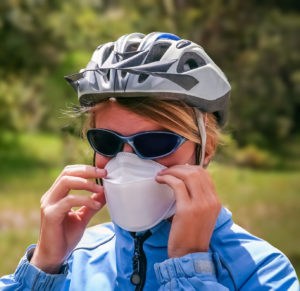 The last question is easiest to answer – masks definitely do reduce transmission of micro-droplets in the breath. Since it’s pretty certain that around 25% of people who contract COVID-19 don’t show symptoms, and almost everyone who gets it is asymptomatic for the first few days but can still infect others, wearing masks will slow the spread.
The last question is easiest to answer – masks definitely do reduce transmission of micro-droplets in the breath. Since it’s pretty certain that around 25% of people who contract COVID-19 don’t show symptoms, and almost everyone who gets it is asymptomatic for the first few days but can still infect others, wearing masks will slow the spread.
One thing to keep in mind is that wearing a mask is not really about protecting yourself from infection, but about making sure you don’t pass it to others if you already have the virus and don’t know it. It’s a gesture of consideration for the people around you.
Some guidelines suggest wearing face coverings at all times outside. This might seem pointless when the real danger is from being close enough to others where droplets could be exchanged – within the 6 foot radius and in enclosed spaces. Common sense might suggest wearing the mask only when close to others and not for the rest of your ride or other time outside. However, I think the guidance to wear a face mask at all times out of the house is given for a couple of reasons:
First, it removes any ambiguity about when to take the mask on or off. When your mask is on all the time there’s no need to decide if it should go on or come off to suit the circumstances. It removes the risk of getting it wrong.
Second, once worn, the mask should be considered to be a contaminated surface, and taking it on and off repeatedly means more possibility of moving microbes to your face, and undoing any benefit the mask gives you and those around you.
With those thoughts in mind, it makes sense for each of us to balance the benefits of wearing masks in proximity with others with the need to breathe while riding. On the down side, masks can get waterlogged from hard breathing, and a soggy mask is ineffective. People who wear glasses have an especially hard time with their masks fogging up.
Some cyclists find wearing a buff that can be pulled up quickly when needed is a good compromise. The material in most buffs is less than optimum for virus-trapping protection, but is certainly better than nothing.
Keeping a mask handy on a ride where you will only encounter others occasionally is probably fine. If you ride bike paths or trails where there are lots of others, or you won’t have time to anticipate and adjust, you might want to keep your mask on.
If you wear one, keep a keen awareness of where you touch the mask, and avoid touching your face with potentially contaminated fingers. If possible, touch only the tapes or elastic and not the mask itself.
The CDC has plenty of information about face masks, and the New York Times has some very helpful articles, like this one on how to make a face mask with easy to find materials.
Beyond the physical – taking care of your state of mind
This article in Bicycling magazine offers some good ideas about self-care for cyclists, particularly around easing off from racing and training to take some respite from the daily grind. The shut down may bring disappointments and inconveniences, but also presents opportunities to strip away the unnecessary and refocus on what’s really important in your life’s journey.
If you’re lucky you may actually be riding more now, and getting the benefits for both physical and mental health that cycling brings. On the other hand, many of us are juggling the competing demands of work, kids, and running a household with fewer resources. It may be possible to work in some sanity-time on a stationary bike, or with a core workout here and there, but in these times it might well not be enough to really overcome the underlying sense of uncertainty that many of us are feeling now.
Those feelings are distressing of course, so it can be tempting to avoid feeling them at all. That rarely helps in the long run.
Feel what you feel.
It’s important to allow yourself to feel what you feel – fully, but then to separate yourself from the feeling and let go of it. You are the feeler, not the feeling itself. The feeling will pass. First experience it, then consciously let go of it.
If that seems easy to say, hard to do, mindfulness exercises can help you get toward it.
Mindfulness is very helpful for achieving calmness, dealing with uncomfortable feelings, and regaining a sense of solidity in the present. It brings you back to what is, rather than what may be. My wife Kathy works with groups to encourage self-care, and has tons of great resources. She passed this one along: a link to an introductory mindfulness course she recommends.
Another key to self calming is truly simple – breathe.
Remembering to breathe fully is tough when the pressure is on, but paying attention to how you inhale and exhale has great benefits.
First, it is truly calming. Navy Seals use these same techniques to maintain clear, calm thinking in the middle of a firefight.
Second, the techniques for filling your lungs transfer to cycling. Better breathing can make a real difference, especially on those long hard climbs where getting extra oxygen to your muscles really counts.
We tender hearted cyclists can learn a lesson from this battle tested Navy Seal’s video, shared with me by a friend. If you prefer a different guide, try searching on box breathing technique, or yoga breathing.
Key points to take away:
- Breathing with attention lets you fill your lungs more completely, and exchange more air.
- Deep breathing supplies more oxygen to the body, and takes the body out of stress mode, right down to the cellular level.
- Breathing through the nose rather than the mouth makes more oxygen available in that breath, and activates parts of the nervous system that reduce stress response.
- Five minutes of deep breathing with attention can make a real difference to your state of mind for much of your day.
I hope these self-care nuggets help you cope in these strange times. Working together, we’ll get through it, and eventually we’ll be stronger for it. There’s a lot to look forward to, especially the time when we can celebrate our collective resilience and endurance in person, with races and group rides, cook outs and dinner parties, without Zwift and Zoom.
In the meantime, take care, and be kind to yourself.
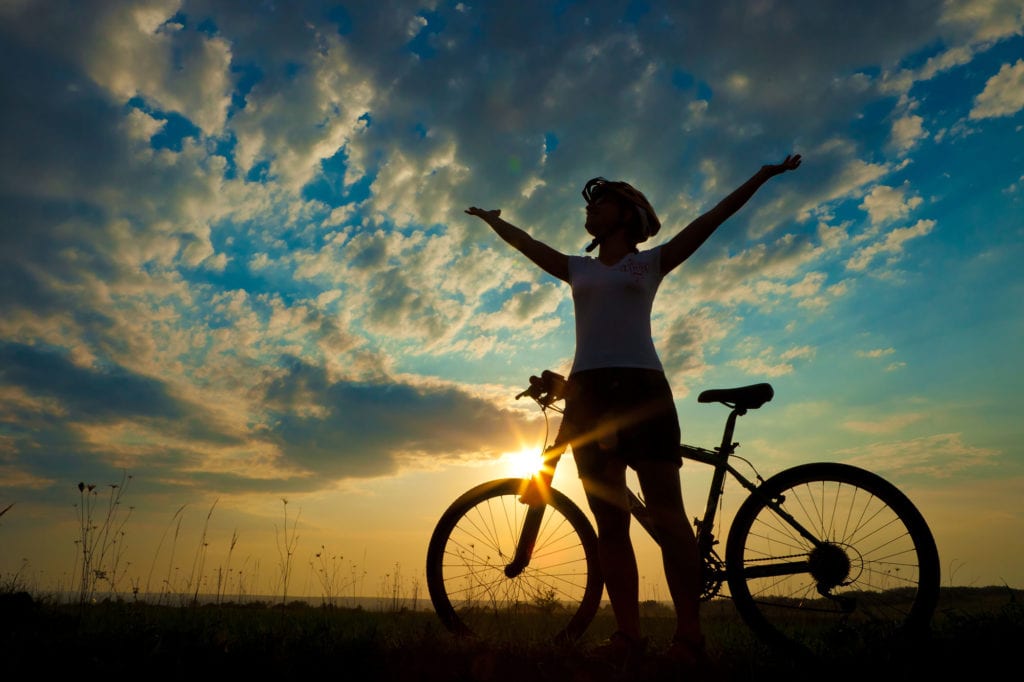
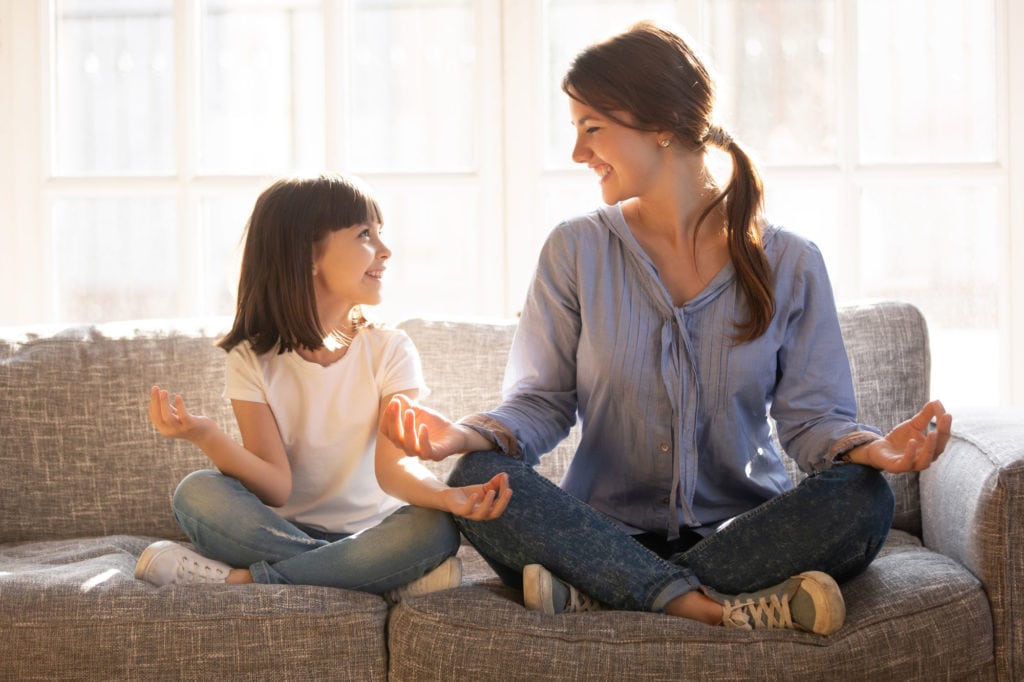
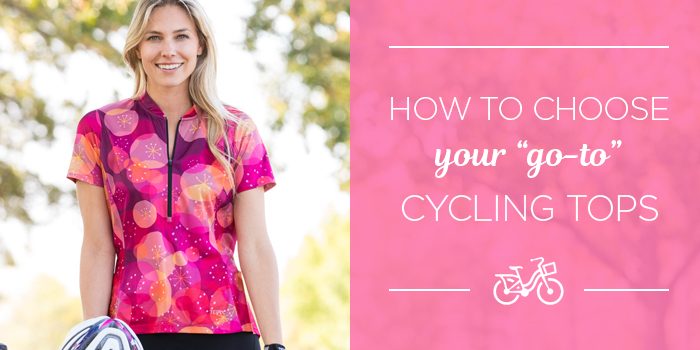


Leave a Reply